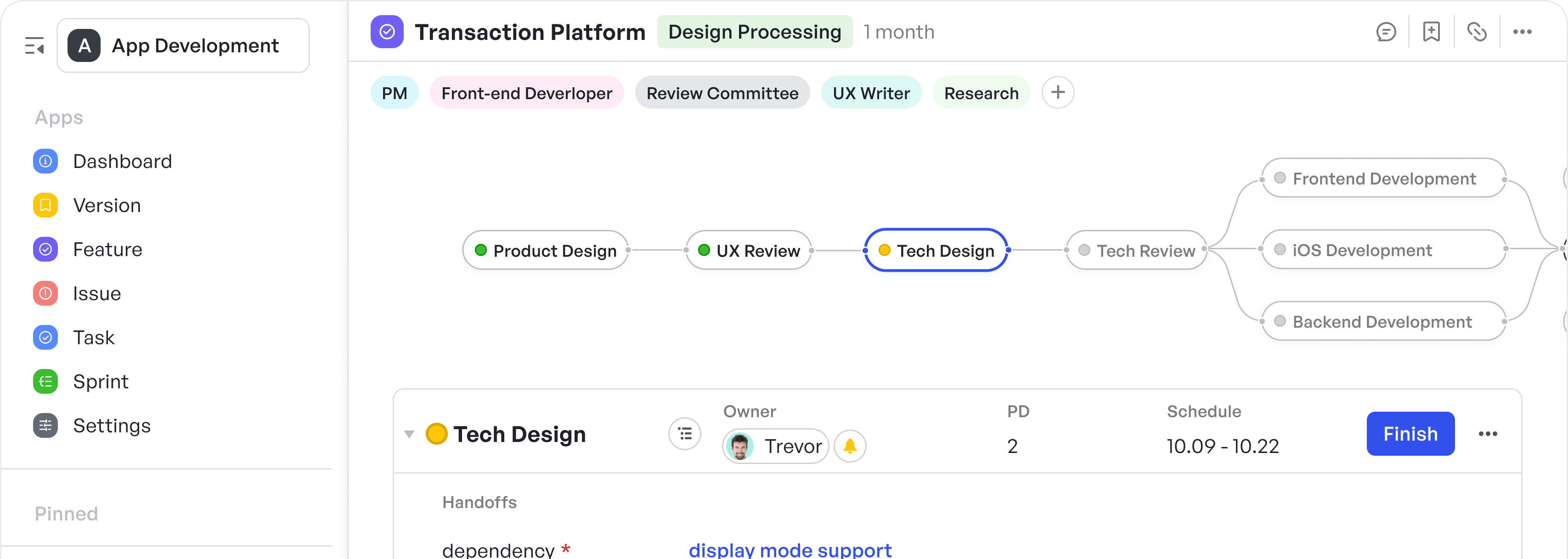When selecting an Agile development tool, it's imperative to consider the unique dynamics and size of your team. Whether you're part of a budding startup or a sprawling enterprise, the right Agile software development tool can significantly impact your team's productivity and overall success.
How to Choose the Right Agile Development Tool for Agile Teams?
Assess Your Team's Specific Needs
For Small Teams
Small agile teams benefit from tools that are straightforward to adopt. A popular tool used in Agile software development for such teams should offer essential Agile-friendly features without overwhelming users with complex functionalities they may not need. Look for software that supports core Agile principles, facilitates quick iterations, and allows for fast communication.
For Medium-Sized Teams
A tool for Agile software development that caters to medium-sized teams should strike a balance between comprehensive features and usability. It should provide robust reporting capabilities and more elaborate project tracking while remaining user-friendly. Integration with other popular tools in Agile software development, like CI/CD pipelines or repositories, may also start playing a significant role.
For Large or Enterprise Teams
Large teams require a tool that can handle multiple projects and a diverse user base without compromising performance. Such an Agile software development tool should offer advanced features like resource allocation, risk analysis, and extensive integration capabilities with other enterprise systems. Scalability is key, as the tool must grow alongside the organization's expanding needs.
Consider Agile-Friendly Features
- Backlog Prioritization:
- Essential for organizing and refining the list of work to be done.
- Flexible Workflow Configuration:
- Customizable workflows that can be adapted to a team’s specific Agile process.
- Sprint Planning:
- A good Agile development tool should facilitate setting goals and allocating tasks for each sprint.
- Kanban Boards:
- Visual boards help monitor the progress and flow of tasks through the workflow stages.
- Burndown Charts:
- These charts are popular tools in Agile software development for tracking sprint progress and remaining work.
250px|700px|reset
加载中,请稍后
- Collaborative Spaces:
- Look for features that allow teams to communicate and collaborate internally, such as shared document spaces, chat functions, and commenting features.
- Continuous Integration/Continuous Deployment (CI/CD):
- This has become a popular tool used in Agile software development for automating the software release process.
- Role-Based Access Control:
- Setting permissions and roles that align with Agile team structures.
250px|700px|reset
加载中,请稍后
By thoroughly evaluating each tool's features and tailoring your choice to your team’s structure, you can ensure that the tool you select not only aligns with Agile best practices but also fits your unique development environment perfectly.
Why Meegle is the Smart Choice for Agile Teams
Meegle has emerged as the Agile team's ally, offering features and capabilities that perfectly align with the principles of Agile methodologies. Here's why Meegle is being hailed as the smart choice for teams aspiring to Agile greatness.
- User Stories and Backlog Grooming
- User Stories and Backlog Grooming
- Meegle allows teams to create and prioritize user stories, providing the basis for defining project deliverables. Its backlog grooming functionalities help teams refine requirements and ensure they are developing the right features.
250px|700px|reset
加载中,请稍后
- Sprint Planning and Iteration Tracking
- Sprint Planning and Iteration Tracking
- Teams can use Meegle to plan sprints effectively, estimate effort, and assign tasks. Meegle supports iteration tracking to follow the progress of sprints and manage the work being done within each cycle.
250px|700px|reset
加载中,请稍后
- Kanban and Scrum Boards
- Kanban and Scrum Boards
- With its visual task boards, Meegle supports both Kanban and Scrum methodologies, offering a clear view of work in progress, pending items, and completed tasks. These boards enhance transparency and facilitate daily stand-ups.
250px|700px|reset
加载中,请稍后
- Real-time Collaboration
- Real-time Collaboration
- Communication is a core aspect of Agile, and Meegle provides real-time collaboration tools. The entire team can communicate changes, updates, and issues instantly, ensuring everyone is aligned and informed.
- Agile Reporting and Metrics
- Agile Reporting and Metrics
- Meegle generates real-time reports and Agile-friendly metrics such as velocity, sprint burndown, and release burnup charts, helping teams to monitor their speed and efficiency, and make data-driven decisions for continuous improvement.
250px|700px|reset
加载中,请稍后
250px|700px|reset
加载中,请稍后
- Integration with Development Tools
- Integration with Development Tools
- Meegle can integrate with various development tools that Agile teams commonly use, such as CI/CD pipelines, version control systems, and code repositories. This creates a seamless workflow from backlogs to deployment.
250px|700px|reset
加载中,请稍后
- Flexible Workflow Customization
- Flexible Workflow Customization
- Recognizing that Agile teams work differently, Meegle allows for workflow customization to align the software with the team's unique Agile processes.
250px|700px|reset
加载中,请稍后
- Role-Based Access Control
- Role-Based Access Control
- With role-based access, Meegle supports the various roles within an Agile team, enabling appropriate permissions and visibility for developers, project managers, and stakeholders.
250px|700px|reset
加载中,请稍后
Meegle's interface and user experience are crafted to be intuitive, reducing time spent on learning the tool and maximizing the focus on adding value to the project. With its comprehensive suite of Agile-focused functions and features, Meegle not only optimizes productivity but also upholds the Agile principles of collaboration, adaptation, and iterative progress—the hallmarks of successful Agile projects.





